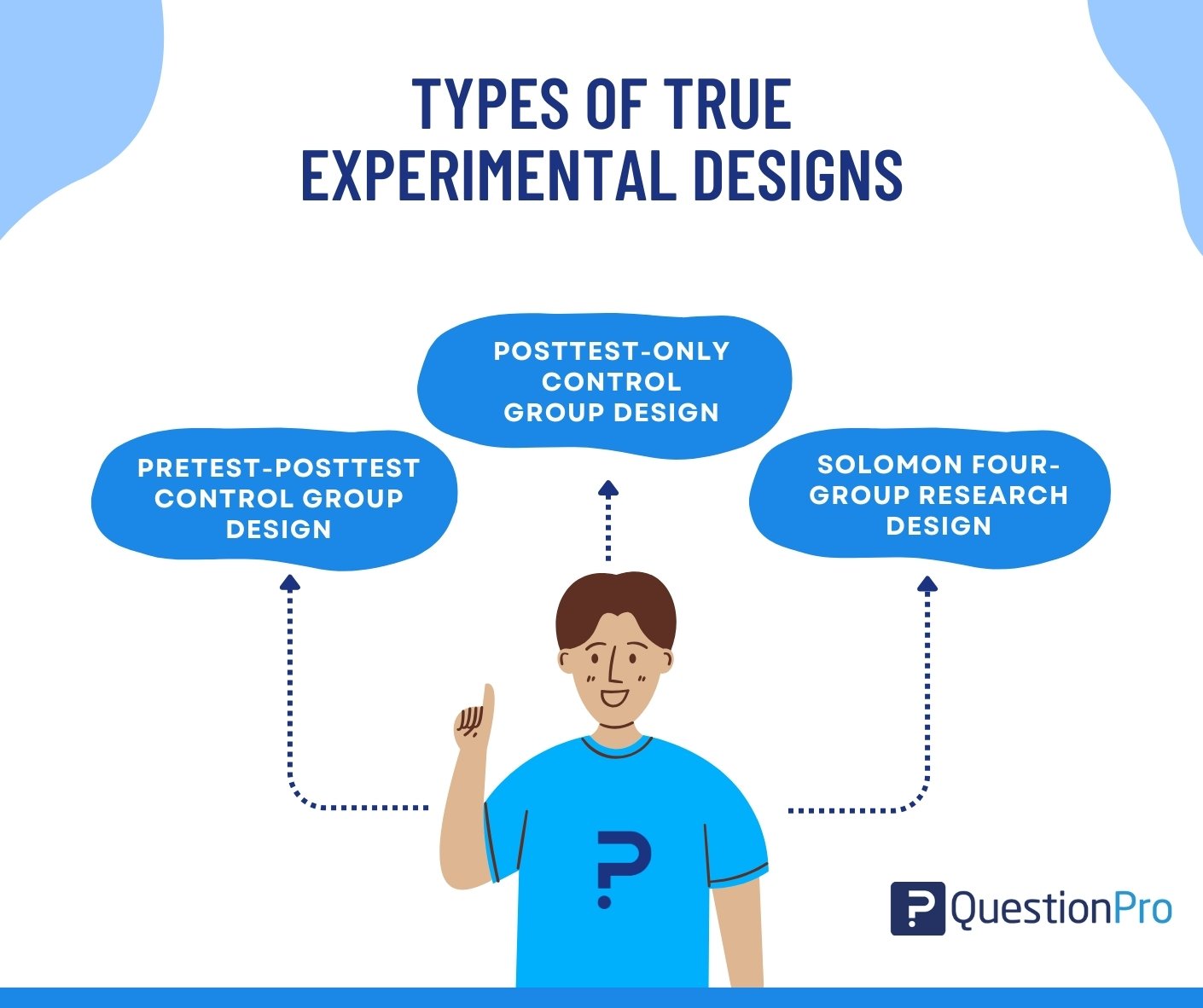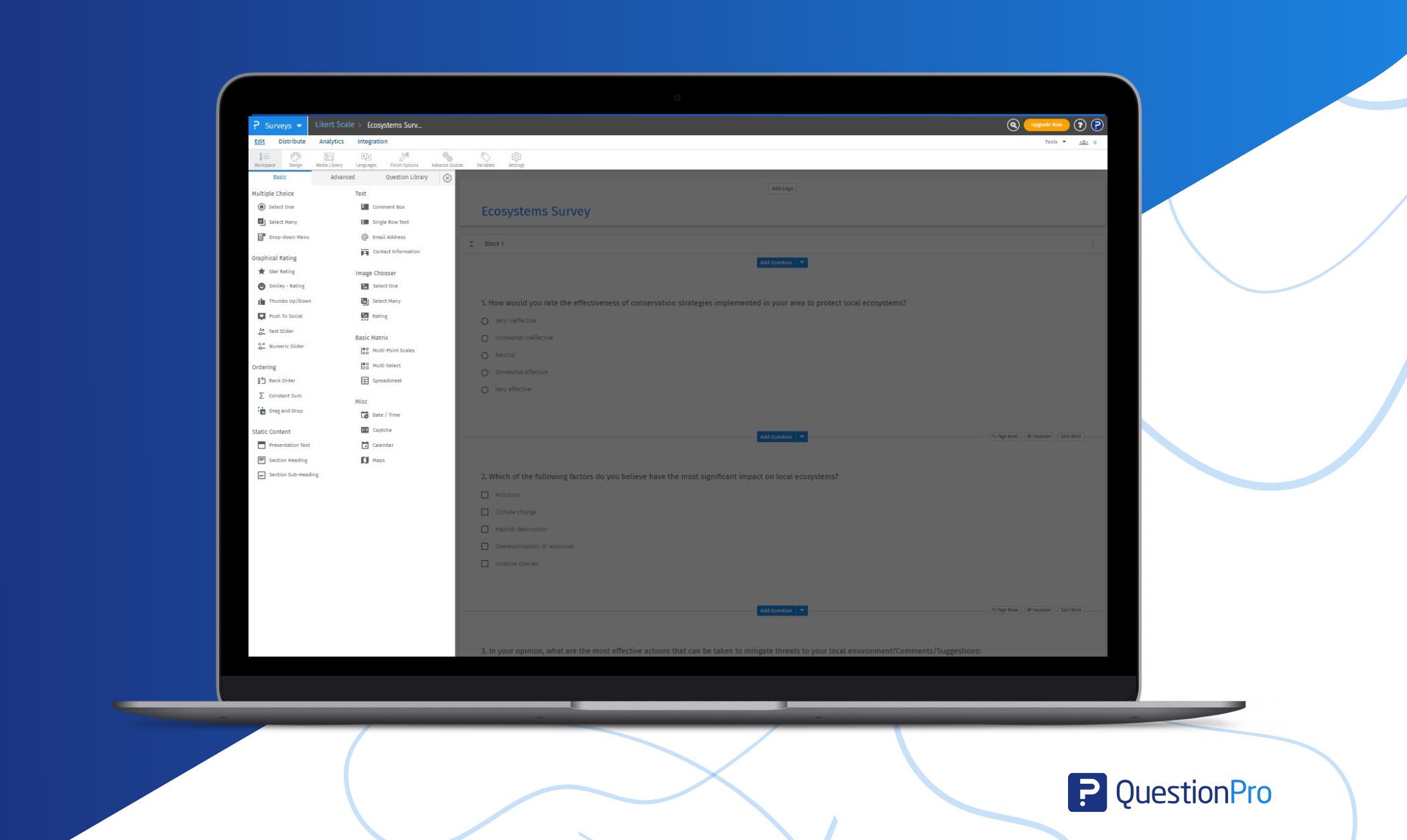
Whether you’re testing new strategies, products, or interventions, true experimental designs offer the precision and control needed to make informed, impactful decisions. Causality also has a vital role in different fields, such as psychology and education, medicine, and social sciences, where we focus on causal relationships.
True experimental designs can play a vital role in improving your research and decision-making processes. These designs help ensure your findings are accurate and unbiased by providing a reliable framework to identify cause-and-effect relationships.
In this blog, we will discuss the definition, features, types, and practical examples of true experimental designs, highlighting their importance in producing accurate and unbiased results.
What is True Experimental Design?
True experimental design is a type of organized experimental research work that looks to determine cause-and-effect relationships at the most precise level. It employs random assignment, control groups, and experimental groups to minimize bias and obtain credible results.
In true experimental research, participants are randomly assigned to experimental groups or control groups. True experimental designs stand out among research designs because they provide the most robust framework for testing hypotheses and drawing valid conclusions.
Experimental research, especially true experimental research, can be conducted in accordance with high methodological standards, resulting in findings that are credible and relevant in real-world application scenarios.
Key Features of True Experimental Design
True experimental design is often called the gold standard of research because it helps organizations and researchers prove what really drives change. Each feature works together to ensure that findings are trustworthy, accurate, and actionable.
- Randomization: Participants are assigned to groups randomly. This keeps the experiment fair and balanced, so any differences you see in results are more likely tied to the treatment, not participant backgrounds.
- Control Group: A control group acts as your “baseline.” By comparing this group to the one that receives the treatment, you can clearly see whether the new idea, product, or strategy is making an impact.
- Manipulation of the Independent Variable: This is where you deliberately change one element, like pricing, messaging, or a product feature, to see how it affects outcomes such as customer behavior, satisfaction, or sales.
- Control Over Extraneous Variables: External factors (like demographics, timing, or environment) can cloud results. Managing these variables ensures your experiment stays focused on what matters most: the effect of your chosen intervention.
- Cause-and-Effect Analysis: By bringing all these features together, true experimental design lets you move beyond assumptions or correlations. You can confidently say, “This change caused that result,” and make decisions backed by solid evidence.
These features collectively ensure that the outcomes observed are due to the experimental manipulation and not other confounding factors.
Types of True Experimental Designs with Examples
True experimental designs provide a structured way to test cause-and-effect relationships with maximum reliability. They are especially valuable in research, market research, and customer feedback studies where organizations want to measure the true impact of interventions, campaigns, or strategies.
Below are the key types of true experimental designs, explained with examples.

1. Pretest-Posttest Control Group Design
In this design, you can measure the dependent variable before and after introducing the independent variable. Both control and experimental groups are tested, with only the experimental group receiving the treatment.
Suppose A company tests customer perception of a new product package. Both groups take a pre-survey; only one group sees the new packaging, while the other sees the old. A post-survey measures any change in perception.
2. Posttest-Only Control Group Design
Here, participants are randomly assigned to groups, but only post-intervention outcomes are measured. This design saves time and avoids potential pretest bias.
Suppose in a clinical trial, researchers want to test the effectiveness of a new drug. Participants are randomly divided into two groups.
- One group receives the new drug.
- The other group receives a placebo (no active ingredients).
After the treatment period, both groups are evaluated to see if there are measurable differences in health outcomes. If the group taking the drug shows significantly better results than the placebo group, researchers can conclude that the drug itself caused the improvement.
3. Solomon Four-Group Design
This robust design combines pretest-posttest and posttest-only designs. It uses four groups: two with pretests and two without, which helps control for pretest effects.
For example, a retailer tests a new loyalty rewards program. Two groups complete a pre-survey, while two do not. One group from each pair gets the new rewards program, while the others act as controls. This design reveals both the effect of the rewards and whether taking a pre-survey influenced customer responses.
These true experimental designs provide robust frameworks for identifying causal relationships and ensuring the reliability of research outcomes across diverse fields.
Uses of True Experimental Designs
True experimental designs are a trusted way to figure out what really causes change. By reducing bias and controlling outside factors, they give results you can rely on.
What makes them even more useful is that they work across many fields, from science and healthcare to business and customer research. Here are some common uses:
1. Scientific Research
Scientists use true experiments to test ideas in controlled settings. For example, a biologist might check how temperature changes affect plant growth while keeping everything else the same.
2. Healthcare and Medicine
Clinical trials often follow this model to test new drugs or therapies. Random assignment and control groups make sure improvements come from the treatment itself, not chance or outside factors.
3. Education
Teachers and researchers apply these designs to see if new methods or tools actually improve learning. One group might use an interactive app while another sticks with textbooks, and the results are compared.
4. Business and Market Research
Companies use true experiments for A/B testing and consumer studies. For example:
- Testing two versions of product packaging.
- Comparing ads to see which gets better responses.
- Trying different price points to find the most effective one.
With platforms like QuestionPro, businesses can run these tests easily using features like survey randomization, branching logic, and analytics dashboards.
5. Environmental Studies
Researchers measure how interventions affect nature, like testing pollution controls on air quality or tracking the effect of conservation efforts on wildlife.
6. Customer Experience
Organizations also run experiments to fine-tune and improve the customer journey. By testing different approaches, they can identify what truly drives engagement, satisfaction, and loyalty. Examples include:
- Testing different loyalty rewards.
- Trying alternative survey wordings.
- Comparing app onboarding flows.
- Measuring the Impact of Free Shipping Offers.
These designs are the gold standard for research due to their rigor and reliability.
Advantages of True Experimental Designs
True experimental designs are the gold standard of research because they give you clarity, precision, and cause-and-effect answers.
By controlling variables and randomization, they help businesses, researchers, and organizations make confident data-driven decisions. Here are the benefits:
- Causality: True experimental designs are one of the only ways to know what causes what. By manipulating one variable and seeing what happens to another, you can confidently establish cause-and-effect.
- Control Over Variables: True experiments use control groups and randomization so you can minimize the impact of external factors that might skew the results. This makes the findings more reliable and focused on the variable you are studying.
- Randomization Reduces Bias: Randomly assigning participants to groups means each group is statistically the same. This reduces selection bias and makes you confident that differences in outcomes are due to the treatment.
- Replicability Across Contexts: True experiments follow a structured and standardized process so that they can be replicated in different contexts or with new participant groups. This increases confidence in the results.
- Reliability and Data Integrity: By combining control groups, randomization, and structured implementation, true experimental designs give you results that are not accidental or one-off. They give you real, measurable effects that you can trust.
True experimental designs offer these advantages and provide a strong foundation for advancing knowledge and driving evidence-based decisions in academic and practical settings.
Pre-Experimental Research Design Vs. True Experimental Research Design
Pre-experimental and true experimental designs differ significantly in their approach, rigor, and ability to establish cause-and-effect relationships. Here’s a comparison:
| Aspect | Pre-Experimental Research Design | True Experimental Research Design |
| Definition | Simplified approach with minimal control, often exploratory. | Highly controlled method to establish causal relationships. |
| Randomization | Does not involve randomization, increasing bias risks. | Uses randomization to ensure unbiased and equivalent groups. |
| Control Group | May lack a control group or use non-equivalent groups. | Always includes a control group for accurate comparisons. |
| Internal Validity | Lower due to limited control and confounding variables. | High due to strict control and randomization. |
| Applications | Suitable for exploratory research or pilot studies. | Ideal for rigorous hypothesis testing and intervention studies. |
| Reliability of Results | Less reliable and harder to generalize. | Highly reliable and replicable. |
Both approaches have their place in research, depending on the study’s goals and constraints.
True Experimental Designs with QuestionPro
QuestionPro makes it easy to create and run true experimental designs. With built-in tools for randomization, survey design, and data analysis, you can confidently test cause-and-effect relationships in your research.

Here’s how you can use QuestionPro for your experiments:
1. Design and Customize Surveys
Create surveys with multiple question types, such as multiple choice, rating scales, or open-ended questions. You can also use ready-made templates for quick setup.
For example, in a pricing study, one group of respondents sees “$19.99” while another sees “$24.99,” allowing you to measure changes in purchase intent.
2. Randomize Participants
Use QuestionPro’s randomization tools to assign respondents fairly into experimental and control groups. Split your survey participants into two groups to test which product description leads to higher purchase intent.
3. Collect Data Efficiently
Distribute surveys to reach the right audience with QuestionPro’s global respondent panel through:
- Social media
- Website intercepts
A company can test how onboarding flows differ across regions by running the same survey with users in Asia, Europe, and North America.
4. Analyze for Insights
Access dashboards, cross-tabs, and advanced analytics to understand group differences and uncover causal relationships. Run an ANOVA test to see if differences in customer satisfaction scores between groups are statistically significant.
5. Manage and Collaborate
Store responses securely, export data easily, and share results with your team to work more effectively. A university research team can collaborate on an experiment in one centralized platform while ensuring data privacy.
Tip: For better results, carefully select your target audience, keep questions clear and unbiased, and focus on what’s relevant to your research goals.
Conclusion
True experiments are the gold standard for establishing cause and effect. By using randomization, control groups, and structured methodology, they give you accurate, unbiased, and reproducible results.
With the right tools, true experiments don’t have to be complicated. QuestionPro Survey Software makes it easy by having built-in features like randomization, survey branching, advanced analytics, and secure data management. So researchers, marketers, and businesses can design experiments, collect feedback, and get insights that matter.
By combining experimental methods with QuestionPro, you can validate strategies, improve products, and deliver experiences that resonate with your audience while ensuring your research is reliable and actionable.
Frequently Asked Questions (FAQs)
Answer: A true experimental design requires manipulating an independent variable, random assignment, a control group, control of extraneous variables, and replicability to ensure accurate and reliable results.
Answer: Quasi-Experimental Design resembles true experiments but lacks random assignment. While it seeks to explore cause-and-effect relationships, its findings may be less robust due to potential biases. True Experimental Design is a method to find cause-and-effect relationships. It uses random assignment, control groups, and experimental groups to reduce bias and ensure reliable results.
Answer: The major strength of a true experimental design is its ability to establish clear cause-and-effect relationships through control, randomization, and replicability.
Answer: The three main types of true experimental designs are Pretest-Posttest Control Group Design, Posttest-Only Control Group Design, and Solomon Four-Group Design.
Answer: True experimental design ensures high validity with randomization and control, while pre-experimental design lacks rigor and is prone to bias.







